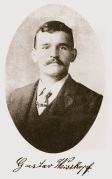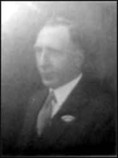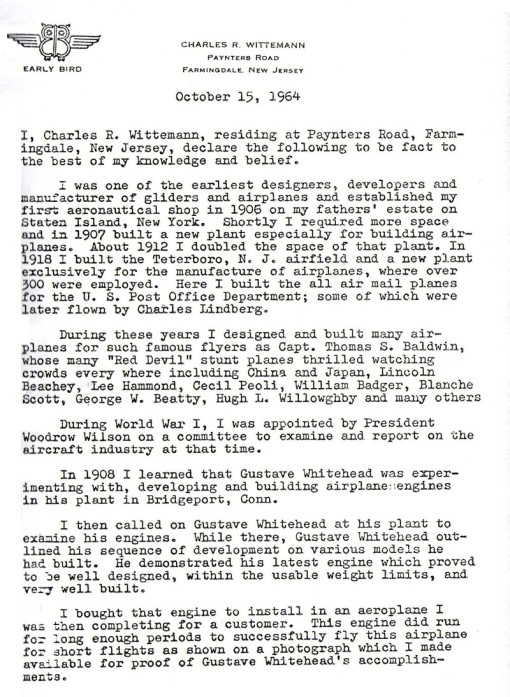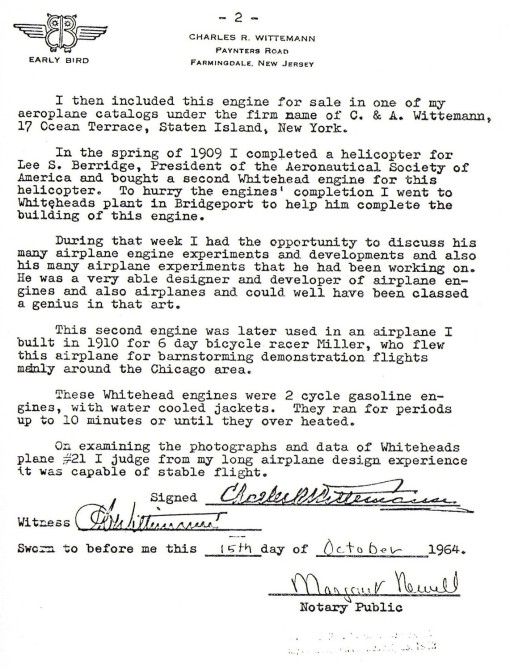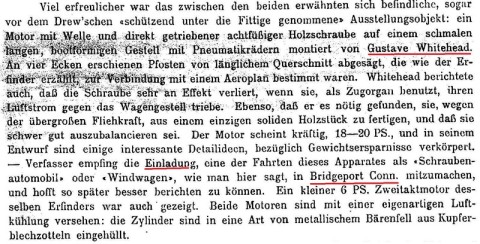Two experts examined the engine Whitehead used to power his 1901 aircraft, one in 1906 (Carl Dienstbach - see bottom of page), the other, Charles Wittemann (see immediately below:
Affidavit of Charles R. Witteman, Oct. 15, 1964
Illustrierte Aeronautische Mittelungen, Jan. 1907, p.298
Below is an excerpt from an article about the Dec. 1906 exhibition (in German) written by Carl Dienstbach. In it, Dienstbach refers to the items Whitehead displayed at the Dec. 1906 exhibition of the Aero Club of America in New York:
Translation:
Much more encouraging was the display-item located between the two, aforementioned items which was even placed in front of and “under the protective wing” of the Drew-like item: it was a motor with a drive-shaft and a directly-driven, eight-foot long, wooden propeller attached to a long, narrow, boat-like frame on inflated tires built by Gustave Whitehead. At four points there were sawn-off beams of elongated cross-section which, according to the inventor, were for attaching the wings. Whitehead also reported that the air-screw’s effectiveness was greatly diminished if its down-flow blew onto the wagon’s framework when used for pulling [tractor]. Furthermore, that, because of the inordinately high centrifugal force, he had found it necessary to make the propeller out of one, single block of wood and that it had been difficult to balance the propeller well. The motor appears to be powerful, 18-20hp, and its design contains several interesting aspects of detail in regard to weight-reduction. This author was invited to participate in one of this apparatus’ test-drives in Bridgeport, Connecticut, as an “airscrew-automobile” or “windwagon” as it’s called here, and hopes, later, to be able to report more fully. A small, 6hp, two-stroke engine by the same inventor was also shown. Both motors are equipped with a distinct type of air-cooling: their cylinders are sheathed in a type of metal bearskin made of copper-sheet mopping.
Comment:

